Fly fishers might be the ultimate explorers, and not just when it comes to unearthing new species of far-flung fish to target. Exploring can take place without leaving the country… or even the county, and without even turning over a new piece of fishy real estate. Instead, “exploring” can be better described under a banner of pride--”I’ll figure this place out if it kills me.”
Fly fishers can be like those uber-handy homeowners who can’t stand the idea of calling in a plumber or an electrician, even if if would make more sense to do so. Instead, they’ll pick up the parts at the hardware store and, if they think they’ll need it, a book on the topic.
And off we go.
We like to do things on our own. We take pride in figuring things out… discovering—for our own edification, even if the information is likely available by simply asking for help—for ourselves what makes a fishery tick.
Today, it’s commonly called “Do it yourself,” or DIY, fly fishing. For those of us who subscribe to this philosophy, the thought of pulling in professionals and paying a small fortune for a guide to cut the learning curve is the equivalent of using a cheat code to solve the latest Modern Warfare videogame installment. Or calling a plumber to fix the toilet in the kids’ bathroom.
“Guides? We don’t need no stinking guides…”
Not to marginalize guides—these are the keepers of the fly fishing castle, and are often the difference between success and failure. But for the die-hard DIYer, that’s simply not important. Walking the curve all the way to success… that’s what turns their crank.
Certainly, there are tools even the most stubborn DIY anglers will take advantage. Forums and message boards are filled with guys who jump in and say things like, “Gonna be in town for a week and wanted to know where the redfish bite is best from shore…” or similar requests for local knowledge. They’ll pop into fly shops and talk to the local experts. They’ll pour over Google maps, search the web with verve and then settle on the places and the flies and the gear, armed with information they mined on their own.
Is it silly? Of course not—it’s more difficult, certainly, but for many, the notion of putting the puzzle together without the corner pieces is what turns them on. For others, it’s purely economical—a day on a flats skiff with a guide is going to run $500 (sometimes more, with a good tip), and when you couple that with the cost of fuel, lodging, meals and drinks, it becomes the expense most dedicated DIYers can do without.
If this is the kind of fishing that interests you—if the journey is just as important as the destination—here are some tips that might help you get started on a true DIY adventure that you’ll likely never forget, especially if it ends with you staring a nice fish in the eye at the end of the trip. I’ll use a recent trip I was lucky enough to take to Florida’s Emerald Coast as an example:
Google maps
Indespensable. But just because it looks shallow from space doesn’t mean it is. The beach and the flats between Pensacola and Panama Beach are crystal clear. Reference the maps, compile a list of likely spots, and then do the ground-truthing when you arrive.
The internet
Yes, it’s obvious, but use it smartly. Often, somebody has been where you’re going before you, and they’ve provided some good information on the destination online, either through a blog post or a YouTube video.
Give yourself time, you’ll need it. Days are shorter than you think, and, let’s face it, it’s going to rain on you as least once. A three-day weekend is pushing it. A week is more like it.
Those message boards and forums? Use them, and don’t just limit yourself to lurking over posts about fly fishing—the bait guys know what’s what, and you, as a fly angler, can likely translate the verbiage. For instance, “The sheepshead and black drum are near the bridge pillars on the bottom, and they’re on small shrimp and fiddler crabs.” You can read that as, “Use at least an intermediate sink-tip line and shrimp and crab patterns pulled along the bottom near the bridge pilings.” If you want to engage, do it. Most forums are frequented by avid anglers, and, especially in salty areas where “secret spots” aren’t nearly as important as timing, flies and gear, you’ll get good information from kindred spirits who earnestly hope you succeed.
Fly fishing outfitters, fly shops and tackle shops
Pop in and ask questions. If folks are helpful, buy a handful of fly patterns. And, if you have success based on their information, tell them so.
Socialize
Don’t hole up in your condo binge-watching House of Cards at night. Go out. Grab a seat at a dive bar and engage. While at a bar in Florida, I met, of all people, a Realtor, who gave me some of the best information I got that whole trip--directions to little pocket parks on Choctowhatchee Bay that fronted miles and miles of redfish flats. I waded for hours one afternoon on some of the clearest, sexiest flats this side of Abaco, thanks to someone who sells houses on the bay. And, we watched one of the most amazing sunsets while we talked. When folks say, “It’s not all about the fishing,” this is what what they’re talking about.
Lodging
This is maybe the biggest expense, and if you have a fishing buddy or two (or three, or four), this will help. In Destin, I went through ResortQuest, a property management firm that runs through Wyndam, and found a reasonable rate for a condo right on the beach (the beach that, in January, holds whiting and redfish). There were lots of option, from full on houses on the beach that, with a group of buddies, could actually be affordable, to little cottages on the bay where you can step off the backyard grass onto a flat.
Meals and such
If you’re able to find a place with a kitchen or even a kitchenette, this won’t be nearly as onerous as it could be. In Destin, for example, I stocked up on a week’s worth of food at the Winn Dixie and ate pretty well—I even did a shrimp boil one night, and it was excellent. Of course, you’ll want to eat out a few times, and take in some of the local color. Fly fishers are suckers for local dive bars and greasy spoon joints, so plan accordingly, and be smart about it.
Transportation
Car rentals can be tricky. If you can drive to your destination, that’s great, but sometimes, if you arrive by air, you’ll find that hopping in a car can put a dent in the budget. Plan ahead. Weeks… months if you can.
Visitors bureaus and chambers of commerce are always worth a visit, either online before you arrive, or in person after you get there. They’ll have information on everything from where to stay to where to eat to where to get the best deal on a kayak or even a boat rental.
A guide
Yes, a guide. I have some friends who steelhead fish near Stanley, Idaho, every spring. Every spring, they hire a guide for the first day on the water--they say it helps them dial in where the fish are, what they’re after and what to look for. I couldn’t agree more, and it certainly helps cut the learning curve. I enjoy a good day on the water with a quality guide as much as the next guy, but, often, the expense is too much for me to justify, especially since I enjoy the learning process so much. That said, if you find yourself struggling or unable to identify the missing link, a guide can be the difference between casting to fish or just casting.
Doing it yourself has its challenges--there is no doubt. But if you have the head for details and don’t mind (or even enjoy) the planning and preparation for a fishing trip, a DIY experience is something you should try. There’s really nothing quite like connecting with a fish after you’ve done all the legwork needed to finally see that line stretch tight. It’s a sweet feeling, particularly when you don’t have to share the glory with a guide who needs to get paid--and handsomely tipped.
Don’t be afraid to step out of your comfort zone and take the responsibility for your fishing success--or failure--on your own shoulders. If you’re not a handy guy at home, and you have a line of credit with your own personal plumber like I do, don’t let that get in the way of doing it yourself when you fish. The negative impacts are few and minor.
In other words, if you screw it up, your basement’s not going to flood.


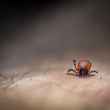








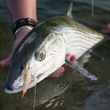







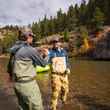








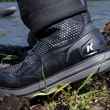
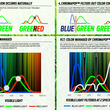

Comments
Jeroen Schoondergang replied on Permalink
DIY all the way for me. That is not because I don't like/trust guides, but all because fly fishing for me is a constant learning curve that starts with the anticipation of a new fishing hole and stretches from the exploration -solving the puzzle- and in the end (hopefully) success. I'll gladly take it for granted that a guide might have put me onto more fish.
Dave replied on Permalink
I'm looking for new DIY destinations. I have just completed one for Dorado in Argentina and am just winding up Brown Trout in England and all have been DIY but I'm running out of places to go. Suggestions?
Rod Hamilton replied on Permalink
Great article on DIY and it hits all of the relevant points. As author of Do It Yourself Bonefishing I tend to have a small bias toward that way of fishing, but to be clear I still use guides throughout the year. My passion for exploring, finding new places, fishing on my own schedule (sunrise - sunset)and just wanting to figure it out on my own, lead me to a DIY lifestyle on the flats. If you have the time to figure it all out there is no greater satisfaction then out smarting Mr. Bone on your own.
John Squires replied on Permalink
Sorry. I meant to write "proper gear," not "proper care." Apparently the ability to communicate is important, also.
John Squires replied on Permalink
A lot depends on the venue. Hiring a guide for the first day on a river you plan to float will not only give you insight as to the fishing, but it may also make you aware of potential hazards. I used to do the DIY thing on wilderness trips in Alaska. Looking back, for that venue, we were ill prepared and fortunate. We all know lots of nasty things can happen in that kind of setting. Proper care and proper emergency equipment is a must in that venue. Thanks for the nice article. John Squires - Against The Flow Adventures
Raymond Anthony Montoya replied on Permalink
Lots of good advice here. DIY has many levels, from exploring small unfished alpine creeks to uncovering a unknown bonefish population on the island of Socotra, Yemen. With either, a guide is not even an option, and this makes for the ultimate DIY. Lots of folks think that it's all been discovered, that it has all been done, but in actuality, there is a shit load of fly fishing firsts to be uncovered on this incredible planet. The reality is that we all start off as DIY fly fishermen on our home waters. As we become more experienced, more knowledgeable, more sophisticated, we desire bigger fish, and classic waters. Soon a bucket list develops. Some, with the means, or time can indulge in this next level pursuit, but for some like myself, simply following in the footsteps of others just isn't enough. Here is were true DIY exploration diverges from DIY fishing. One is just the thrill of doing it on one's own, while the other transcends the mere act of catching fish, and thus becomes a giant leap of faith into the unknown-granted you do some homework and the expectation of catching must be tempered with the thrill of exploration. Some advice to those DIY fishermen traveling to established location where guides do work. Keep a low profile, consider hiring a guide for a few days or week before you set off on your own, and be sure to support the local economy by patronizing locally owned businesses-don't be cheap. Above all, please respect the space/water/flats that these guides use to make a living. Concentrate on areas that are typically unfished. I love to DIY Christmas, but I avoid the well known flats. This means lots of time exploring the outside reefs (I'm not talking about Korean Wreck), and water that is not reachable by boat or truck (there is a lot of that on Xmas). If you see guides with their clients give them the right of way, and for god's sake, don't pound the same flats over and over. Flats need days or weeks to recover from a fish. Use common sense and just slow down.
Pages